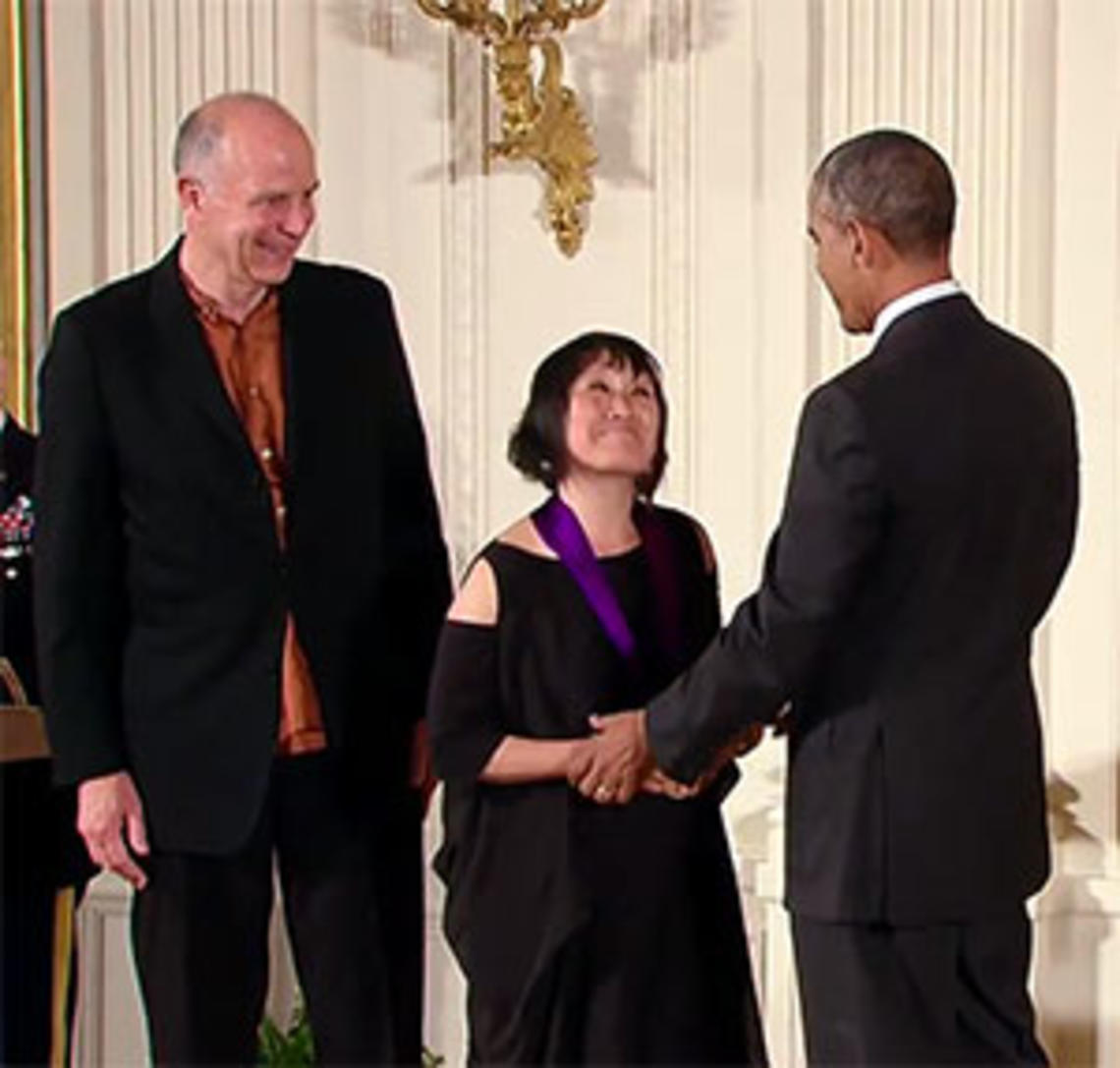
Architect Tod Williams ’65 *67 and his wife and professional partner Billie Tsien have made their mark on American urban landscapes with award-winning projects such as the David Rubenstein Atrium at New York’s Lincoln Center, the Barnes Foundation museum in Philadelphia, and Skirkanich Hall at the University of Pennsylvania. Their firm, Tod Williams Billie Tsien Architects, also designed Princeton’s Andlinger Center for Energy and the Environment, currently under construction next to the Engineering Quadrangle.
On Monday, Williams and Tsien visited the White House to receive the latest honor in their distinguished careers: the National Medal of Arts. Joining them on the list of 2013 honorees were dancer and choreographer Bill T. Jones, singer Linda Ronstadt, visual artist James Turrell, and a handful of other notable names from the fields of literature, music, and film.
The National Endowment for the Arts citation for Tsien and Williams hailed their contributions to their field, both as practitioners and educators: “Whether public or private, their deliberate and inspired designs have a profound effect on the lives of those who interact with them, and their teaching and spirit of service have inspired young people to pursue their passions.”
While Williams and Tsien often make headlines for their innovative designs or their creative use of materials, the last year has also seen them in the news as defenders of one of their most memorable creations, the Folk Art Museum in New York City, which was demolished by its new owner, the Museum of Modern Art, just 13 years after its completion. “Yes, all buildings one day will turn to dust, but this building could have been reused,” Williams told The New York Times. “Unfortunately, the imagination and the will were not there.”










0 Responses